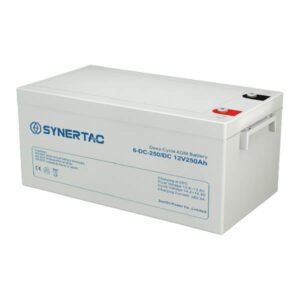For all lithium-ion batteries, BMS is a must-have, why?
Li-ion battery is sensitive to high voltage, low voltage, and high current. It will lead to crystallization inside the battery, then lower the internal capacity, or even that a severe crystallization will stab through the electrode film, cause internal short circuit and combustion or even explosion.
BMS protects lithium battery from over-voltage, under-voltage, over current, and short-circuit.
Although for LiFePO4, there is no thermal runaway and no risk of explosion. Still, BMS is a very important part of Lithium Iron Phosphate Battery (It is also called LiFePO4 Battery, or LFP Battery).
This is because of the most basic function of BMS, the protection. That’s why in some small packs, BMS is also called protection board. It’s the most basic, mini version of BMS.
For a true BMS, it should have the basic functions of Battery Cell Equalization, Circuits Protection, and Temperature Control. The new generation BMS adds Cooling System, SOC Calculation Module, Communication Module, and Alert System.

In general, the role of BMS has expanded from basic protection to optimizing battery performance and extending battery life.
Basic Components of BMS
There are mainly 6 modules of the BMS, every one of them has an important function.
Battery Cell Equalization Module
Theoretically, the individual cells are carefully selected to be all consistent.
However, although the voltage, current, internal resistance, and others are all the same at the factory, there will still be some differences after a period of cycle use.
If left to themselves, these small differences will become larger and larger with each cycle of charge and discharge.

For example, about the voltage. If after a charge cycle, a single cell is full, another cell is not, then it will lead to one cell overcharged and another cell undercharged.
With the Battery Cell Equalization Module, these differences will not increase but remain in the original state – minor difference. That’s why the Cell Equalization Module is necessary.
The working mode of battery cell equalization module is that, when one cell voltage is 10mV higher than another, then a small current will flow from the higher voltage cell to the lower one, until the two cell’s voltages reach the same.
It is critical to the lifetime of the LiFePO4 battery pack.
Circuit Protection Module
Since Li-ion batteries are more sensitive to voltage and current than lead-acid batteries, the protection circuit is an important way to protect them from capacity loss and performance degrade.
Over Charge & Over Discharge
If one cell’s voltage is over 3.75V, then the whole circuit will be cut down. It will not release until the load is removed after 30 seconds and the cell voltage drops under 3.65V.
If one cell’s voltage is under 2.2V, then the discharge circuit will be cut down until the cell voltage recover to 2.3V.
Over Current & Short Circuit
In regular conditions, if the current is higher than 2C for more than 10 seconds, the load will be shut down.
For an extremely high current, it will be detected in ms, then it will not release until the load removed for over 30 seconds.
Temperature Protection Module
The working temperature for the LiFePO4 battery charge is 0℃-55℃.
The BMS has 4 detectors to collect the temperature number from 4 different locations.
Like the above, once the temperature is detected outside the range, it will be shut down.
For example, if in charge condition, and the battery is overheated, it will be shut down until the temperature goes back in the fine range.
Cooling System

Especially for charge conditions, the cooling system is really important.
The battery will heat up while charging, natural cooling is not good enough, then a fan will boost the cooling!
SOC Calculation Module
Battery voltage varies under different loads, charging, and discharging, we cannot get the SOC directly from the voltage only. We have to calculate the SOC by considering the temperature, charging and discharging current, the aging of the battery, etc. Then get the most accurate SOC value.
The BMS records and manages the voltage, current, temperature, internal resistance, and other parameters of the battery at each time.
Communication Module
Communication module can transfer the internal data of BMS to other devices, such as the computer or cell phone, through communication protocols for easy viewing, statistics, and analysis.
Communication protocols include RS485, CAN, BlueTooth, etc.
Alert System
The alert system records the abnormal conditions and shows them in the alert panel.
Key Factors of BMS
Max Constant Charge Current & Discharge Current
Max Voltage
Cooling System






4 Responses
Hi, Andy,
I’m interested in your Lifepo4 battery. Let me know your number, I am happy to talk with you by phone call about your batteries. Thanks.
Hi, Mr. Xiang,
Thank you for contacting us, and we are already in touch!
You can always find us by email sunon@sunonbattery.com, thanks!
Andy
I was using a 100Ah LiFePo4 for my boat motor. It was fine for 6 months. Then I did a long trip, so exhausted it fully. Since then it has charged to 13.8V, but as soon as I connect a load this drops to zero. I suspect the BMS?
Hi Chris,
From your description, the battery is charged to 13.8V, meaning there is energy inside the LiFePO4 battery.
If there is no discharge load, the possible reason is that the discharge circuit is shut down, but the charge circuit is OK.
Does your battery have a BlueTooth or other communication functions?
We can not tell why the discharge circuit is shut down based on the known conditions.
Andy